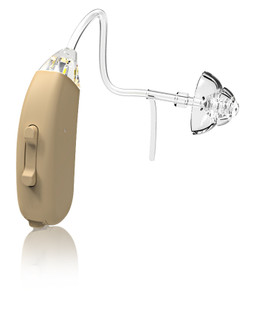Transforming Patient Care: The Future of Hearing Aid Technology
Posted by DR Paul on Jan 11, 2024
Hearing aid technology has come a long way in recent years, and there are many exciting advances on the horizon that promise to transform patient care for those with hearing loss. From miniaturized devices that fit comfortably within the ear canal to smart hearing aids that can automatically adjust to different listening environments, the future of hearing aid technology is looking bright. In this blog post, we will explore some of the most promising new developments in this field and what they mean for hearing aid users.
Hearing Aid Artificial Intelligence
Artificial intelligence (AI) is already being used in a variety of industries, and hearing aids are no exception. Smart hearing aids that use AI algorithms can automatically optimize sound settings based on the wearer's environment and preferences. For example, if you're in a noisy restaurant, your hearing aid might adjust to pick up more of the conversation at your table while dampening the background noise. This technology can also be used to make adjustments throughout the day based on changes in sound levels.
Hearing Aid Wireless Connectivity
Another promising area of hearing aid technology is wireless connectivity. Many hearing aids already have Bluetooth capabilities, which allow them to connect to other devices like smartphones and TVs. This can be a game-changer for people with hearing loss, as it can improve their ability to hear phone conversations, music, and TV shows. In the future, we can expect even more seamless connectivity between hearing aids and other devices.
Hearing Aid Invisibility
One of the biggest complaints people have had about hearing aids is their visibility. Traditional behind-the-ear models can be bulky and conspicuous, while in-ear models can be uncomfortable. However, advances in miniaturization are making it possible to create hearing aids that are virtually invisible while still providing excellent sound quality. These devices can be custom-fit to each patient's ear canal, making them comfortable and discreet.
Hearing Aid Rechargeability
Many newer hearing aids are now being designed with rechargeable batteries, which can provide significant cost and environmental benefits. Rather than replacing disposable batteries every few days, wearers can simply recharge their hearing aids overnight. This also makes it easier to keep up with maintenance, as there are no battery compartments to clean or replace.
Hearing Aid Health Tracking
Finally, some hearing aid manufacturers are starting to incorporate health tracking features into their devices. This includes monitoring steps taken, heart rate, and even hearing health metrics. This can be useful for staying on top of overall health and wellness, as well as providing doctors and audiologists with more data to customize care.
The future of hearing aid technology is exciting, and there are many promising developments in the works that will improve patient care and quality of life for hearing aid users. From artificial intelligence to wireless connectivity to invisibility and rechargeability, there are many exciting advances on the horizon. If you're interested in upgrading or purchasing a hearing aid, be sure to speak with your audiologist to learn more about the latest options that are available to you.










